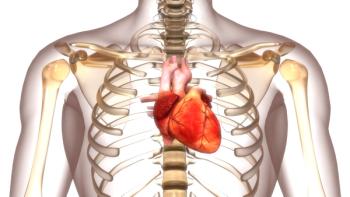
Phillips Medisize launches first branded medical connectors to support advanced ep devices
Key Takeaways
- TheraVolt connectors enhance integration, reliability, and performance in electrophysiology devices, supporting high pin count densities and robust high-voltage handling capabilities.
- Designed for flexibility and cross-platform compatibility, TheraVolt reduces development cycles and customization costs for medical device manufacturers.
Phillips Medisize announces its new TheraVolt connectors, enhancing EP device performance and integration for advanced cardiac treatments like pulsed field ablation.
The TheraVolt Medical Connectors are engineered to enhance integration, reliability and performance in complex medical devices by offering high pin count densities and robust high-voltage handling capabilities. These connectors are built for flexibility and cross-platform compatibility, enabling quicker development cycles and reduced customization costs for medical device manufacturers.
“With the launch of TheraVolt, the first of several Phillips Medisize–branded connectors, we are excited to bring deeper collaboration and innovation to complement our exceptional contract design and manufacturing services and proven Molex connectivity solutions to our medtech customers,” said Pete Soupir, vice president of the MedTech segment at Phillips Medisize.
Soupir added that the TheraVolt line will help enable next-generation EP devices with "enhanced integration, connectivity and performance," emphasizing the connectors’ value in delivering multiple therapy options and expanded data collection in high-performance medical systems.
TheraVolt products draw on more than 80 years of Molex’s expertise in interconnect technology and over 60 years of medical innovation from Phillips Medisize. The connectors are compatible with sterilization via multiple autoclave cycles, support IEC and IPC compliance, and are customizable to meet diverse design needs.
Additional Phillips Medisize medical connectors are expected to roll out in the next 18 to 24 months.
Recent advances in electrophysiology drive demand for smarter device components
Electrophysiology has emerged as one of the most dynamic areas of cardiac care, fueled by rapid advancements in technology that are reshaping how arrhythmias, particularly atrial fibrillation, are diagnosed and treated. One of the most significant breakthroughs in recent years is the rise of pulsed field ablation, a non-thermal energy technique that uses electric fields to selectively ablate cardiac tissue while minimizing damage to surrounding structures.
Unlike traditional thermal ablation methods such as radiofrequency or cryoablation, PFA offers faster procedures, fewer complications, and greater precision. These advantages have led to growing clinical and commercial interest, prompting manufacturers to rethink how EP devices are designed and integrated. With multiple catheter systems, mapping technologies, and ablation tools converging in one platform, the need for high-performance, compact, and reliable medical connectors has never been greater.
At the same time, advances in cardiac mapping systems are enhancing the ability of physicians to identify arrhythmia sources with greater accuracy. High-density mapping catheters now capture thousands of data points in real-time, requiring medical devices that can support increased data transmission and integration. This has driven innovation not only in the software that powers these systems, but also in the underlying hardware components—particularly the connectors that must manage higher pin counts, support electrical isolation, and endure repeated sterilization.
There is also a growing trend toward combining diagnostic and therapeutic capabilities in a single EP
Regulatory and reimbursement environments are also influencing innovation in EP. As value-based care continues to evolve, there is increasing pressure to demonstrate improved patient outcomes and procedural efficiency, which has accelerated the adoption of more advanced, data-rich EP technologies.
Newsletter
Stay informed and empowered with Medical Economics enewsletter, delivering expert insights, financial strategies, practice management tips and technology trends — tailored for today’s physicians.








